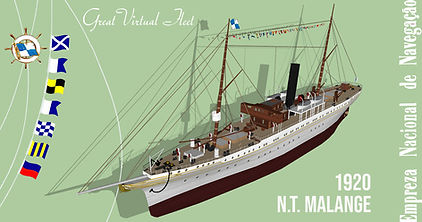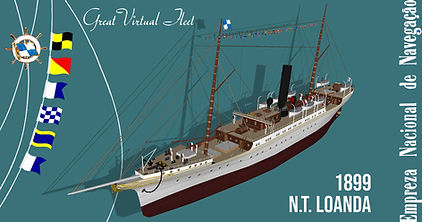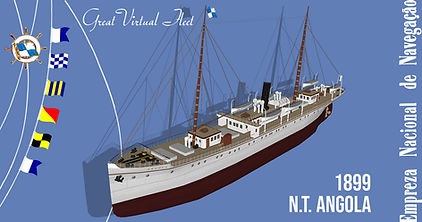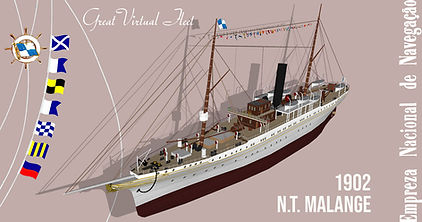
History
Though not as old as the Insulana, the Companhia Nacional de Navegação, or CNN, was a major company that served exclusive to the then Portuguese Colonies. Founded in 1881, their first name was Empresa Nacional de Navegação a Vapor para a África Portuguesa, or ENN. They started small, with two sisterships named Portugal and Angola. When founded, the company celebrated a contract with the government for exclusive routes between Lisbon and Angola, a then Portuguese Colony. Their ships started with a black funnel and a black hull with a white line. They had as rival company the Mala Real Portugueza, but after they went bankrupt the first time, ENN bough the Loanda in 1894 from them and then, in 1902, the Malange as well. It was in 1897 that they lost the first Portugal, but 2 years later, in 1899, they put into service a second Portugal, of which became standard for ENN and future CNN the grey hull with the black funnel, until 1970.
The company further received another contract from the government to establish routes between Lisbon and Mozambique, which until 1905, was made via British and then DOAL ships. For these routes, ENN built the Africa and Lusitania, two modern sisterships and they were joined by Lisboa in 1910. Though from 1910 until 1929 the company only bought second-handed ships after the loss of Lisboa on her second voyage in 1910 and the Lusitania in 1911. They bought at least 3 ocean liners in the 1920’s from the defunct and failed state-company TME to secure the routes to Brazil.
In 1918, they became the now know CNN, but still keeping the same flag and colour schematics as ENN. And in 1922, they gained a new rival: the Companhia Colonial de Navegação, or CCN, which broke CNN’s monopoly of the African Routes. At least one ship, the second Niassa of 1955, was put into war service at the time of the Portuguese Colonial War (1961 – 1974). Though it was in 1961 they received the beloved “N.T. Principe Perfeito”, their last built commercial ship, because soon they would start building cargo ships. In 1970, the company change their colour scheme to a black, white and blue funnel and a light-blue hull and in 1972 they absorbed the Sociedade Geral de Indústria Comércio e Transportes (SGCIT), which was part of Companhia União Fabril (CUF).
They survived of been merged with EIN and CCN in 1974 but did not survive the 1980s. The company still operated cargo ships, but in 1985, after many restructurings, the company was extinct and only liquidated in 2001.

.jpg)
.jpg)
.jpg)

.jpg)

.jpg)
.jpg)

.jpg)
.jpg)
.jpg)